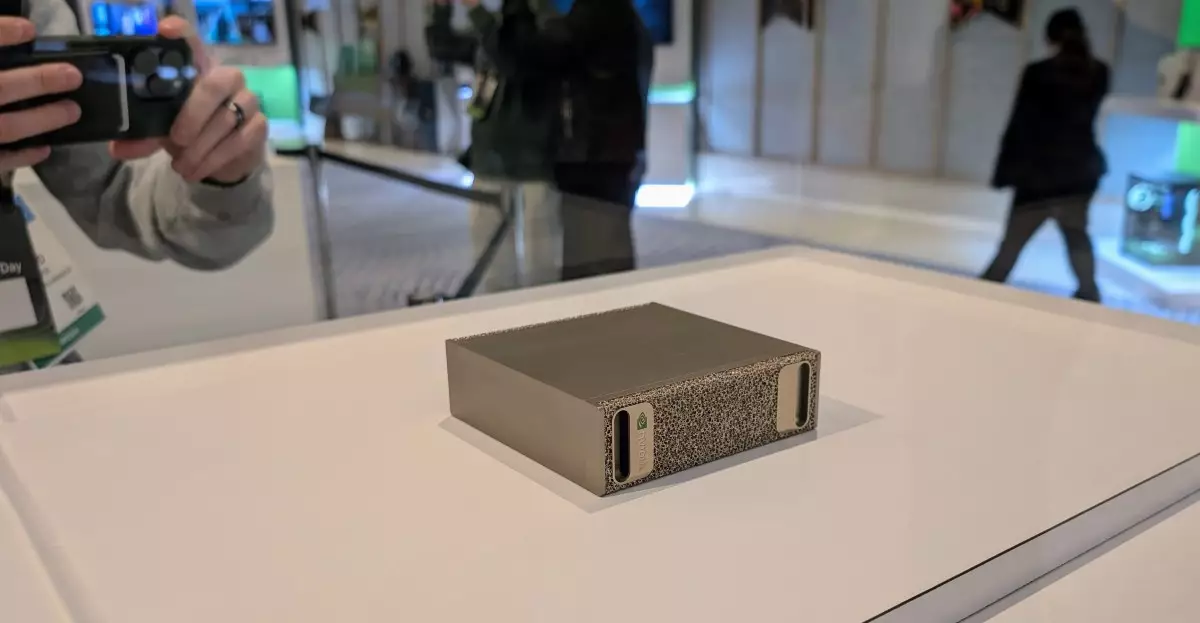The technology landscape is witnessing a dramatic metamorphosis, as industry giants like Asus, Dell, HP, and others dive into the burgeoning field of AI supercomputing. The ignition point for this remarkable shift is Nvidia’s Grace Blackwell platform, which serves as both a catalyst and a foundation for these powerful machines. This strategic move outlines a new era where hardware innovations meet advanced AI capabilities, fundamentally transforming the way we perceive computing power.
In an age where artificial intelligence continues to penetrate every aspect of our lives, the demand for robust computing solutions has surged. Companies once dedicated to primarily conventional PCs are now pivoting sharply toward creating specialized supercomputers that can harness immense processing power. The Grace Blackwell platform is showing promise in leading this charge, allowing manufacturers to tap into Nvidia’s cutting-edge technology. By leveraging the capabilities of this platform, these players aim to provide tailored solutions to both niche markets and the mainstream populace.
The Competitors Emerge: Asus, Dell, and HP
Each competitor is crafting their own versions of mini supercomputers powered by the GB10 super chip, originally developed for Nvidia’s DGX Spark. Asus stands out with the introduction of the Ascent GX10, a sleek mini PC that boasts a staggering AI processing power of 1,000 AI TOPS and an impressive 128GB of unified memory. Although Asus’s design—featuring a modern white plastic exterior with a carved pattern—appeals to consumer aesthetics, it raises questions about functionality and durability compared to its more premium counterparts.
HP, on the other hand, has channeled its energy into the HP ZGX Nano AI Station G1n. This sophisticated mini-computer not only resembles the design of a premium workstation but is also poised to be an attractive addition to any server rack. Its elevated design suggests that HP is targeting professionals who require high-performance computing without compromising on style. Meanwhile, Dell’s approach with its “Dell Pro Max With GB10” is reminiscent of traditional computing aesthetics, featuring a straightforward black chassis. While practical, this unadorned design may not evoke the same excitement as its competitors.
Price Points and Performance Metrics
Amidst all the excitement, one crucial aspect stands out: the pricing and anticipated performance of these systems. Nvidia has set the bar with a $3,000 price tag for its own DGX Spark, yet it’s still uncertain how Asus and HP will position their products price-wise. The unpredictability regarding both availability and pricing dynamics creates a confusing landscape for consumers and enterprises alike.
Dell’s Pro Max series boasts a herculean AI performance of 20 petaflops for its larger configurations, illustrating the monumental leap in potential processing capabilities on the horizon. The ambitious timeline set by many of these manufacturers, targeting summer 2025 for product availability, adds an element of anticipation, but also raises pragmatic concerns regarding the timing of such critical technological advancements.
Expansion Beyond the Initial Players
While the front-runners in this arena are undoubtedly making waves, it is worth noting that other industry players, such as Lenovo, are also gearing up to join the race. The mere fact that Lenovo has signaled intentions to develop its own GB10 mini-computer underscores the pervasive interest in this field. As these companies roll out their offerings, the competitive dynamics will drive a race toward optimization and differentiation in AI capabilities, leading to innovations we can barely begin to fathom today.
Incorporating AI into hardware requires not just sheer processing power but also a thoughtfully designed ecosystem that optimizes user experience and application performance. As these companies continue to experiment with configurations and integrations, it sets the stage for a vibrant marketplace where innovation is not just a goal but an expectation.
The reality of AI supercomputing is swiftly transitioning from conceptual to practical application, driven by an exciting blend of creativity and technology. As leaders in the industry unveil their creations, one thing remains clear: the future of computing is not just about speed but also about the intelligence embedded within these machines, which will redefine the pathways through which we solve complex problems. The era of personal AI supercomputers is dawning, and it promises much more than we can currently comprehend.

